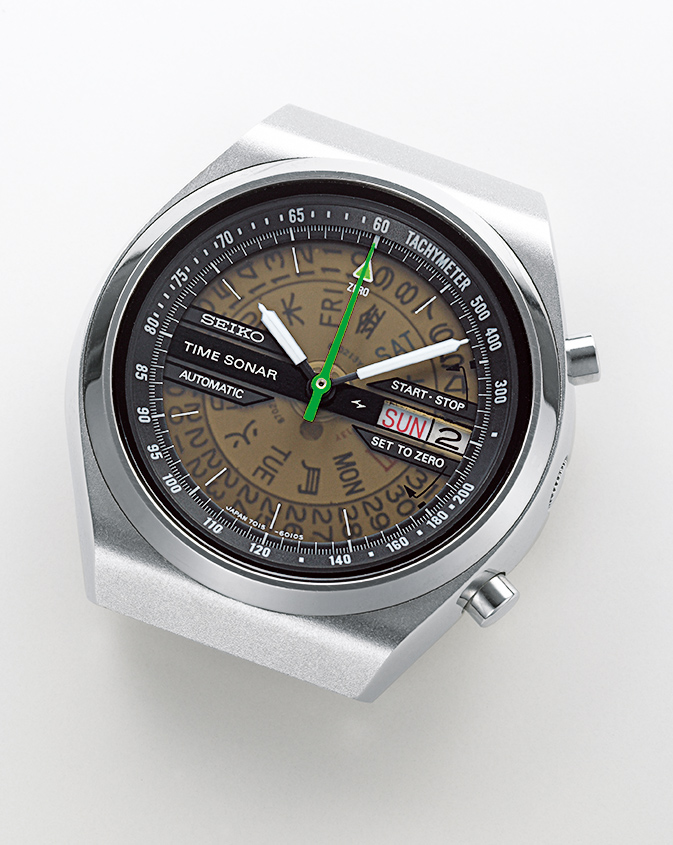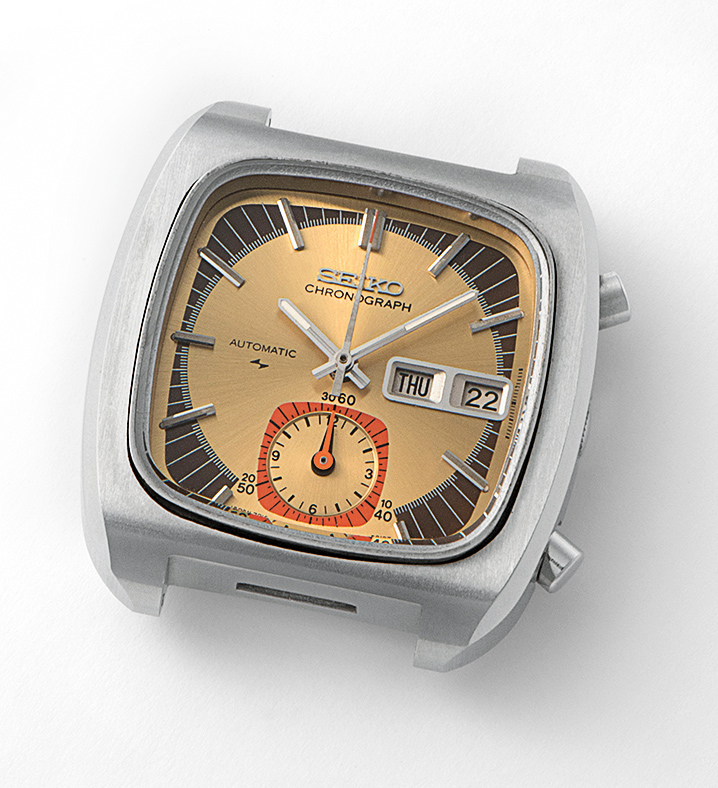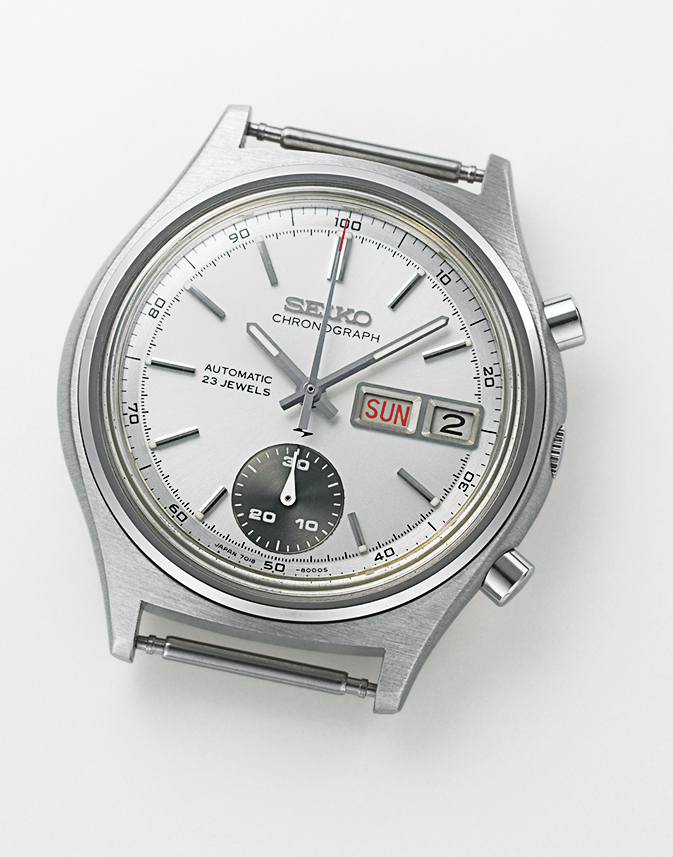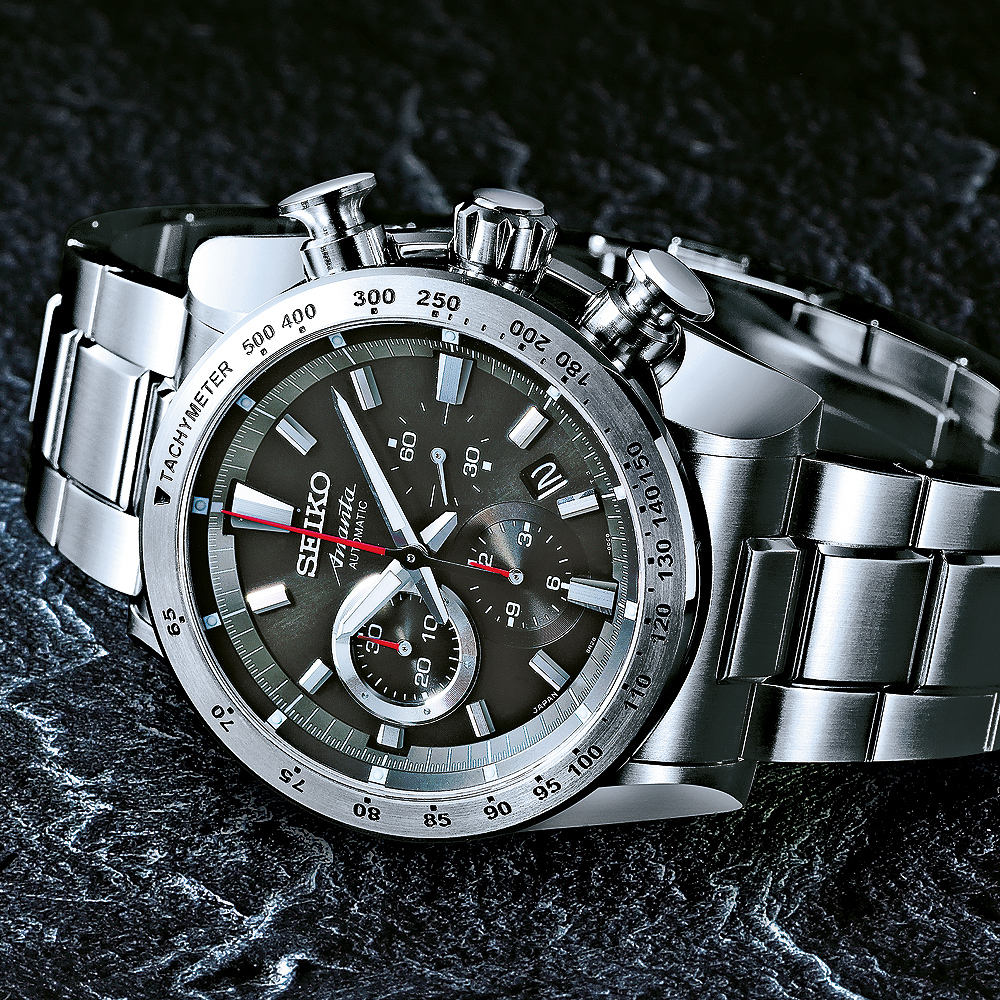We survey Seiko’s half-century-plus of mechanical chronographs in this comprehensive historical feature . Scroll down to discover the Japanese brand’s contributions to the world of chronograph wristwatches.
CALIBER SERIES 6S: THE CHRONOGRAPH REBORN
Like its forebears, Caliber 6S74 had a column wheel. In 1998, Seiko began making mechanical chronographs once again, relying on its veteran engineers and watchmakers, some of whom had retired but agreed to return to work on the project.The 5.8-mm-thick, hand-wound Caliber 6S74 from 1998 had a balance paced at 4 Hz (28,800 vph) and a 60-hour power reserve. The 28.4-mm- diameter calibers in Series 6S were initially intended only for the domestic market, for which they were encased in Seiko’s prestigious Credor line. The watch had no date window but it did have a 30-minute counter, 12-hour counter and power-reserve indicator. Unlike them, the connection between the gear train and the chronograph was achieved by means of a rocking pinion, not by vertical coupling.
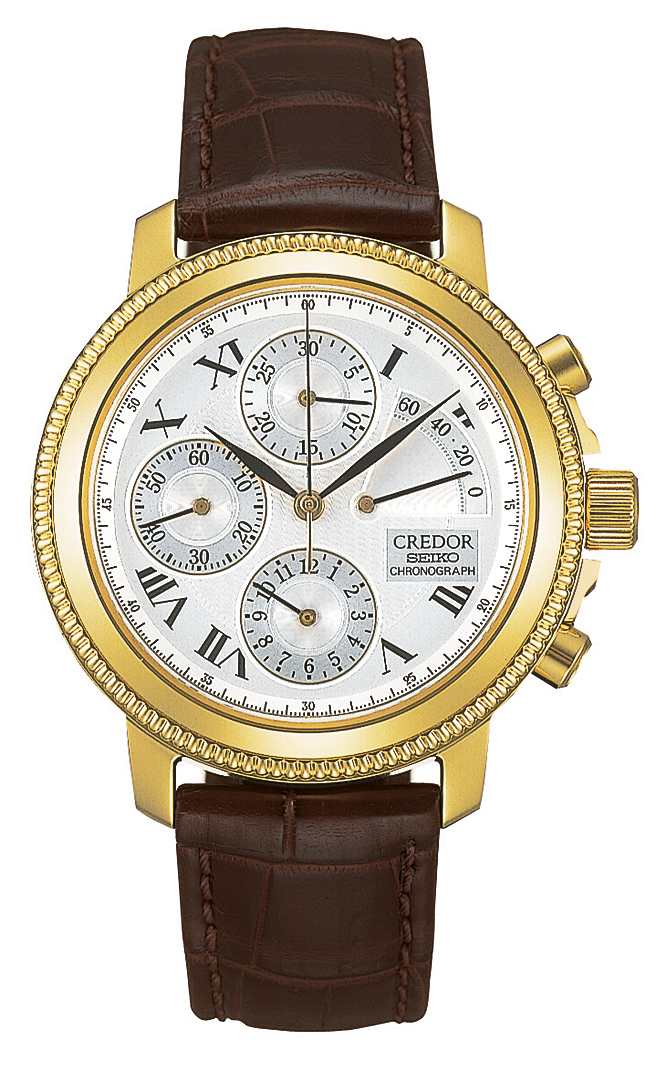
In ensuing years, Seiko derived a whole series of other chronograph movements from this base caliber. It was an automatic equipped with the Magic Lever winding system. It had a date display and a 50-hour power reserve.These included the 7.2-mm-thick Caliber 6S77, which debuted in 1999.
Another automatic, Caliber 6S78, also debuted in 1999. Caliber 6S99, the skeletonized version of Caliber 6S74, appeared on the market in 2000. It was joined in 2001 by the self-winding Caliber 6S37, which supports both a date indicator and a power-reserve display. Caliber 6S96, which was based on Caliber 6S77, had a 60-hour power reserve but no date window.
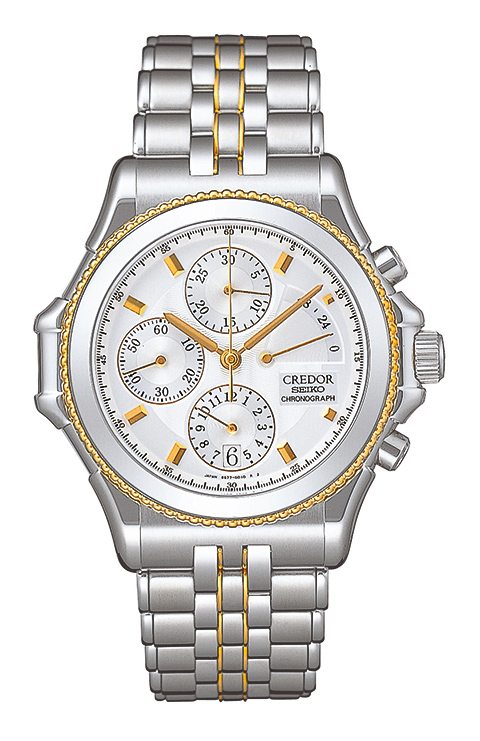
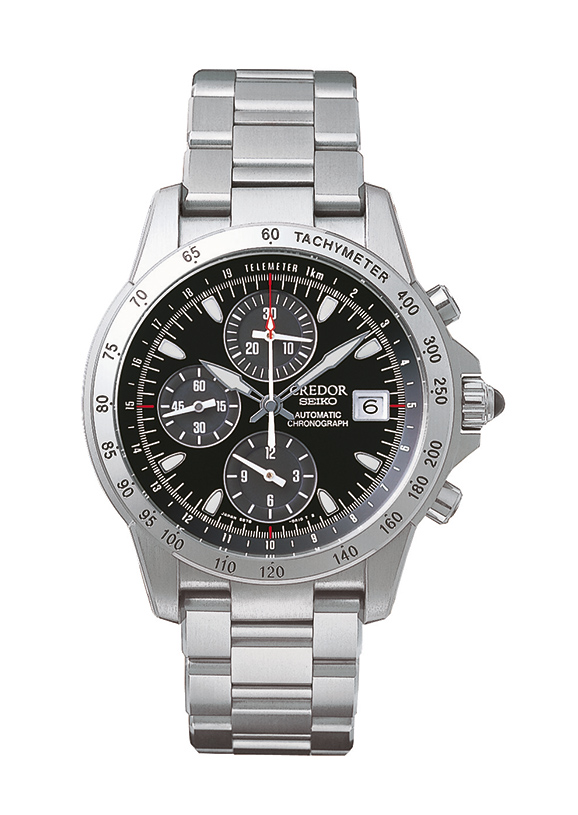
Seiko sold Caliber 6S78, which Seiko called “TC 78,” to third parties. Its customers included Junghans, which renamed the movement J890. TAG Heuer also purchased the TC 78, subjected it to major alterations, manufactured a large percentage of its components in its own factory, and rechristened it “Caliber 1887.”
Lastly, in 2005, Seiko launched Caliber 6S28, based on the 6S78. With this movement, Seiko made the same change ETA had made with its Caliber 7750, which morphed into Caliber 7753 when its counter for 30 elapsed minutes migrated from the “12” to the “3.” Caliber 6S28 has a date window between the “4” and the “5.”
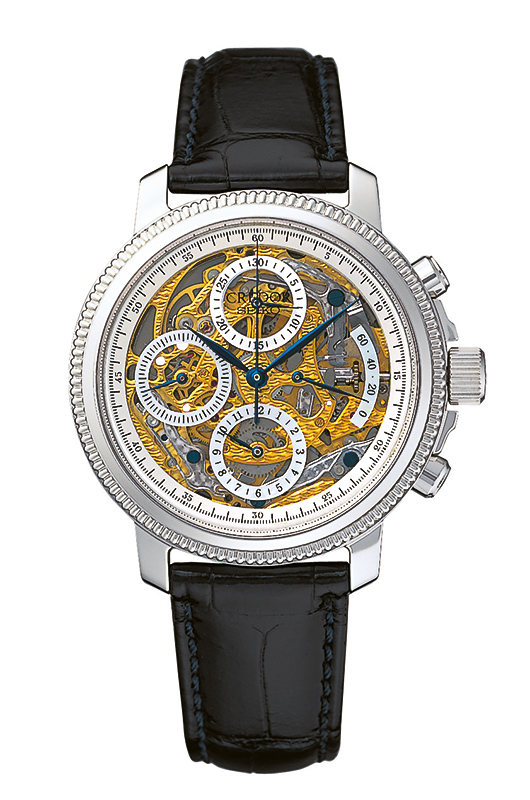
CALIBER 5719: JAPAN’S FIRST WRIST CHRONOGRAPH
Suwa Seikosha, i.e., Seiko’s factory in the city of Suwa, developed the watch, which was launched in time for the 1964 Summer Olympics. When Seiko set out to design Japan’s first wristwatch chronograph, its goal was to produce a watch that was as much status symbol as timing device.It was powered by the 12-ligne, hand-wound Caliber 5719. The balance was paced at 5.5 hertz, or 39,600 vph. With the chronograph mechanism switched on, the movement would run for 38 hours. The case was made of steel and was 38.2 mm in diameter and 11.2 mm thick.The salient features of this 6.1-mm-thick movement included a single button to trigger the chronograph’s functions, horizontal coupling, and a column wheel to control the start, stop and return-to-zero functions.
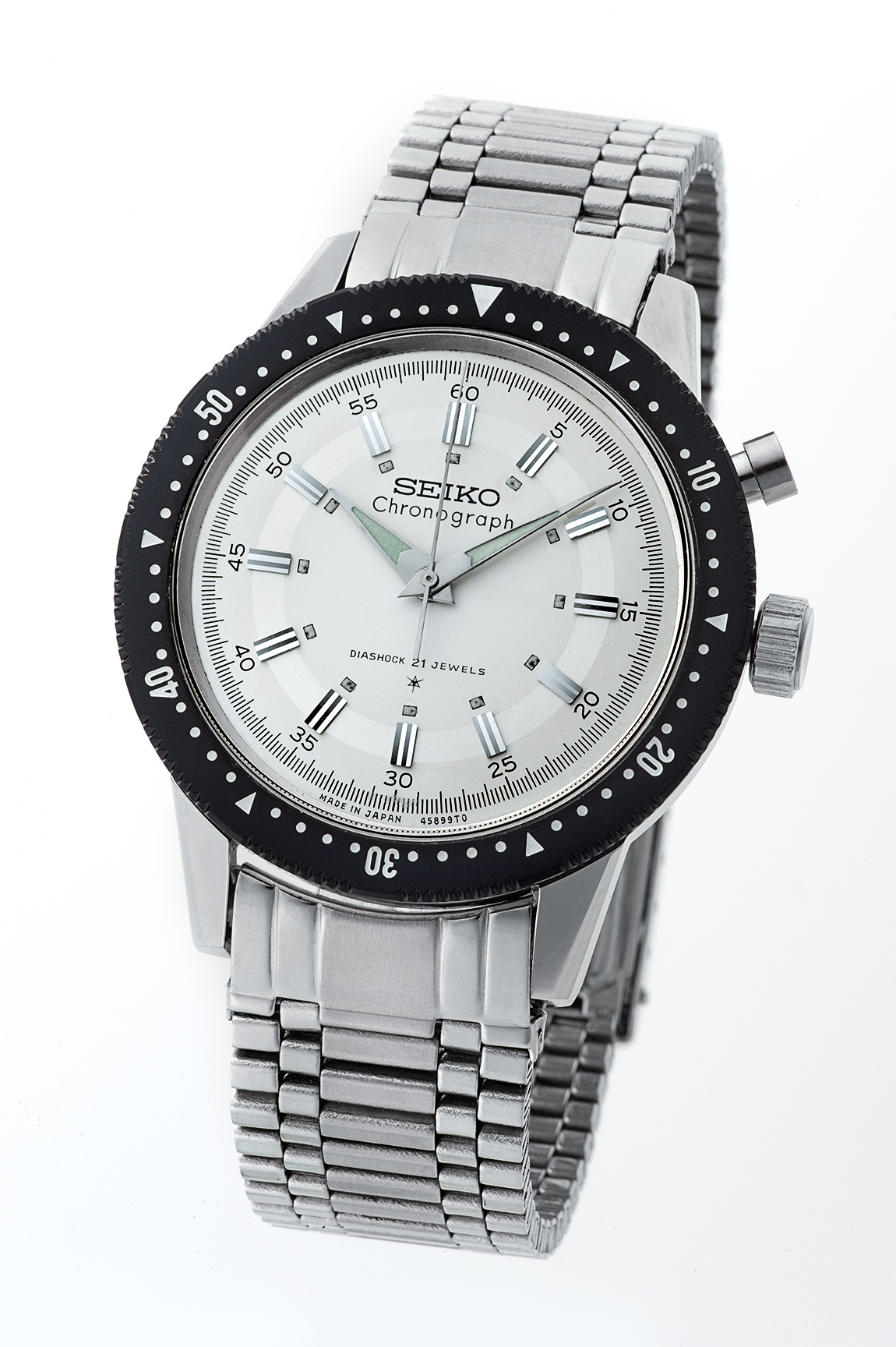
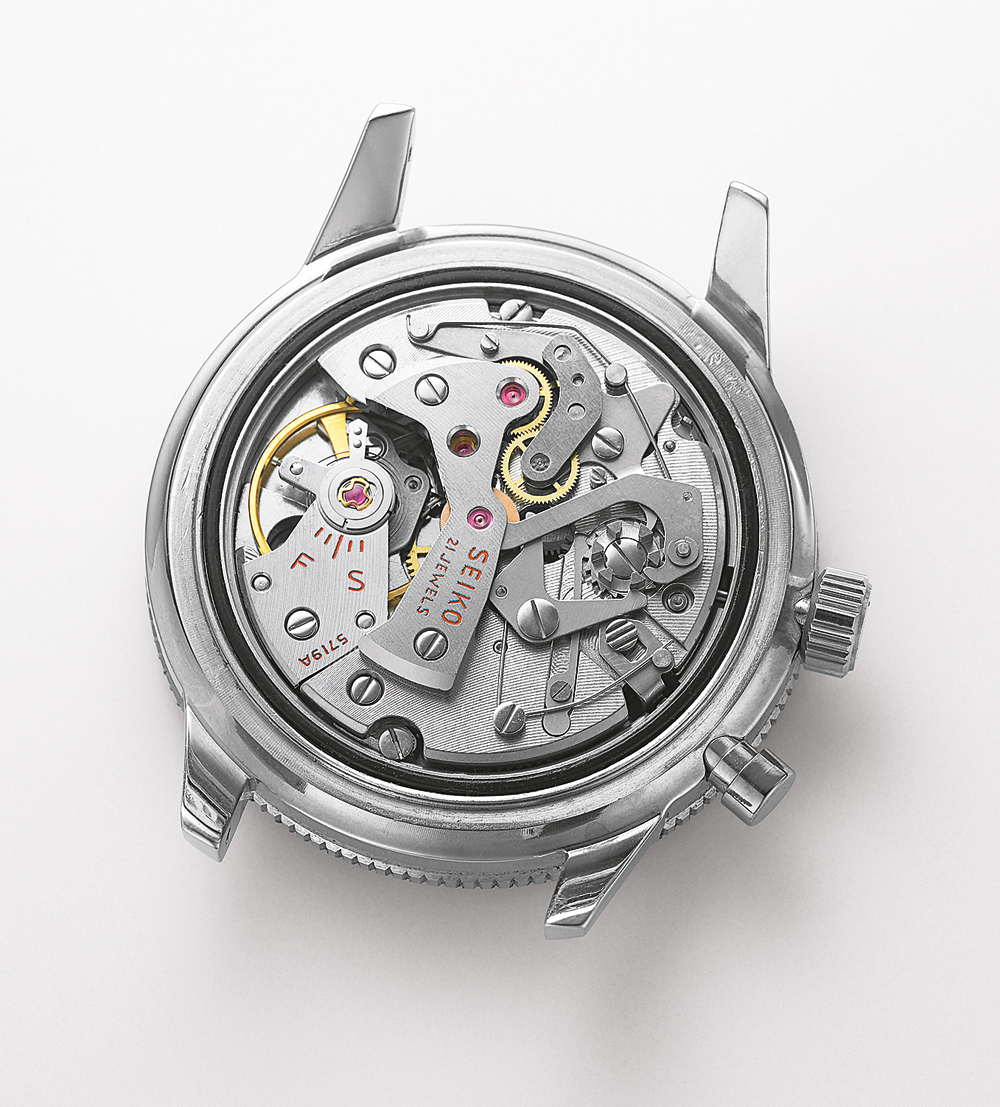
Seiko brought out another version of the movement, the 6.4-mm-thick Caliber 5718, in a limited-edition steel watch that today is extremely rare and highly coveted by collectors. What looks like a date window at 12 o’clock is actually a golf-stroke or point counter, operated by means of the two buttons on the left side of the case. Another special feature is a subdial at 6 o’clock that doubles as an elapsed-minutes counter and a running-seconds display. There is a tachymeter scale along the dial’s periphery.
The watch had no elapsed-time counter, so Seiko equipped it with a rotating bezel calibrated in 1-minute increments. To measure an interval longer than 1 minute, the user started the chronograph and then rotated the bezel until the tip of the large triangle was directly opposite the tip of the minutes hand. After he stopped the chronograph at the end of the interval, he read the elapsed minutes using the rotating bezel and the elapsed seconds using the regular dial. The problem with this first chronograph series was that the bezel had a tendency to break. Seiko rectified this by replacing the fragile bezel with a sturdy, steel one.
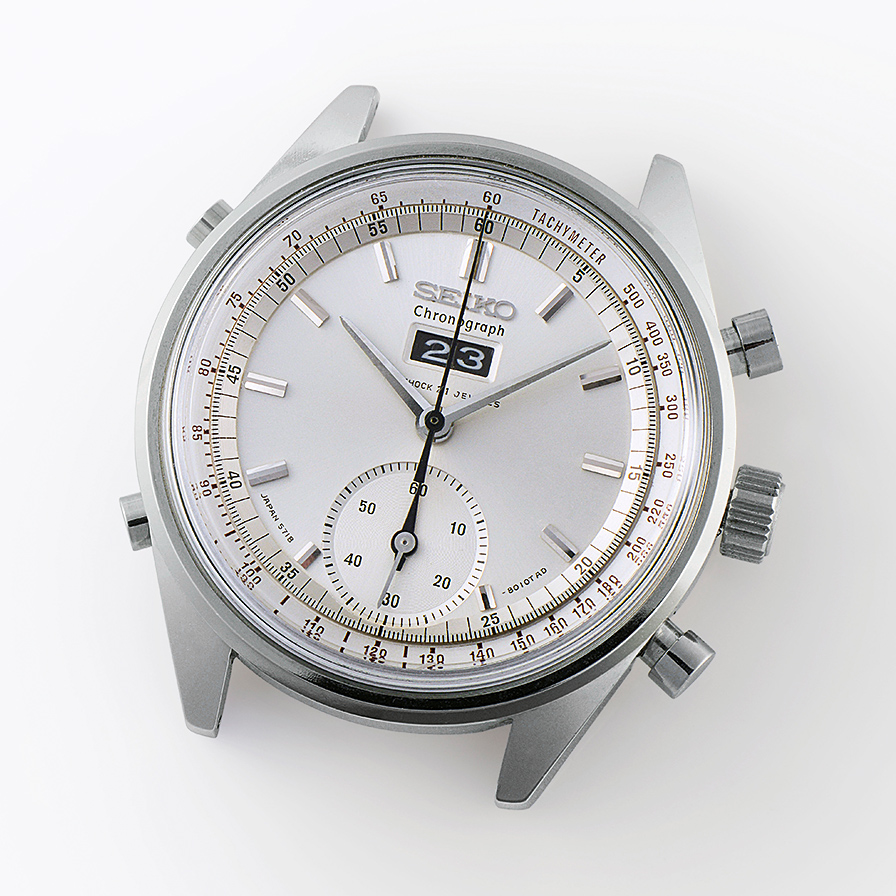
CALIBER SERIES 8R: SEIKO’S CHRONOGRAPHS TODAY
In 2009, 40 years after the premiere of Caliber 6139, people who visited Seiko’s stand at Baselworld saw a brand-new automatic chronograph called Ananta. It contained Caliber 8R28, which went into serial production in 2008. The newcomer combined traditional Seiko chronograph features such as a column wheel, vertical coupling and Magic Lever winding system with recent innovations including a three-pointed hammer that ensures all the chronograph counters return to zero simultaneously. The 8R28 has a power reserve of more than 45 hours. Seiko makes the balance, balance spring and escapement itself. The movement is 28 mm in diameter and 7.2 mm thick. It has a frequency of 4 Hz (28,800 vph) and contains 292 parts.
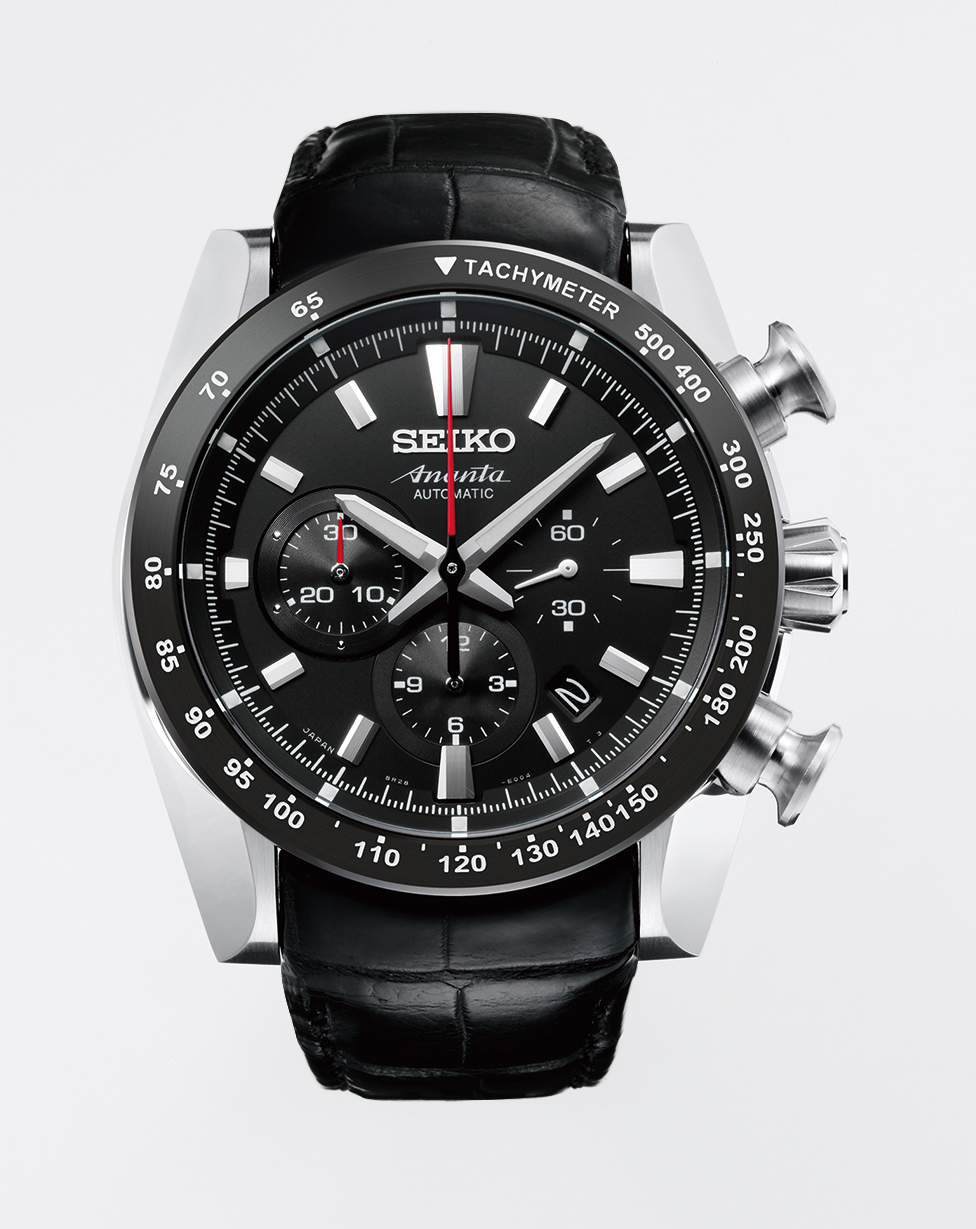
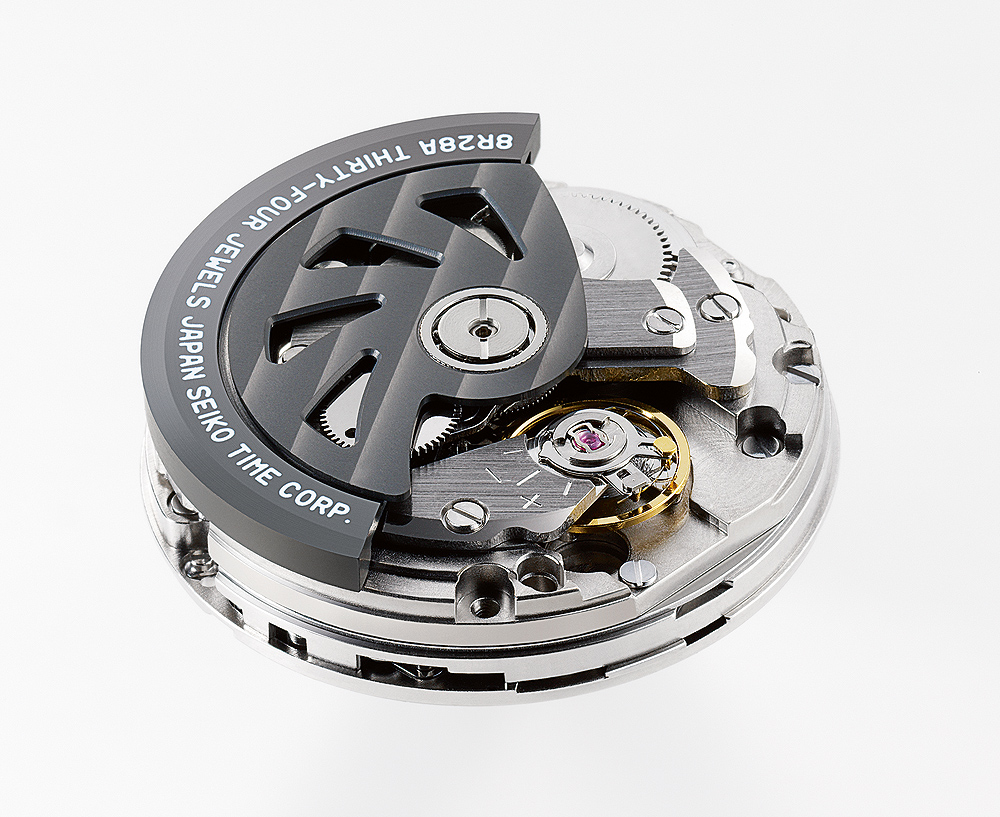
As an alternative to ETA’s Caliber 7753, third parties can opt for Seiko’s Caliber NE88A. Based on Caliber 8R39, it debuted in August 2014 and is 7.63 mm thick.
Caliber 8R39, launched in 2011, is 7.6 mm thick. It was designed for dive watches. Caliber 8R48, 7.5 mm thick, followed in 2014 and is used in the Brightz, which is sold only in Japan.
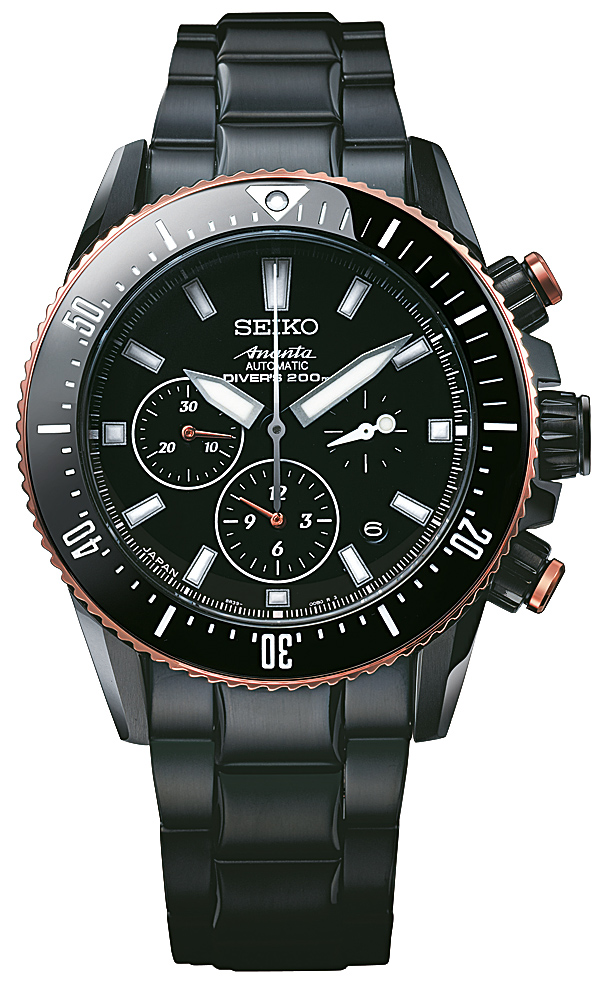
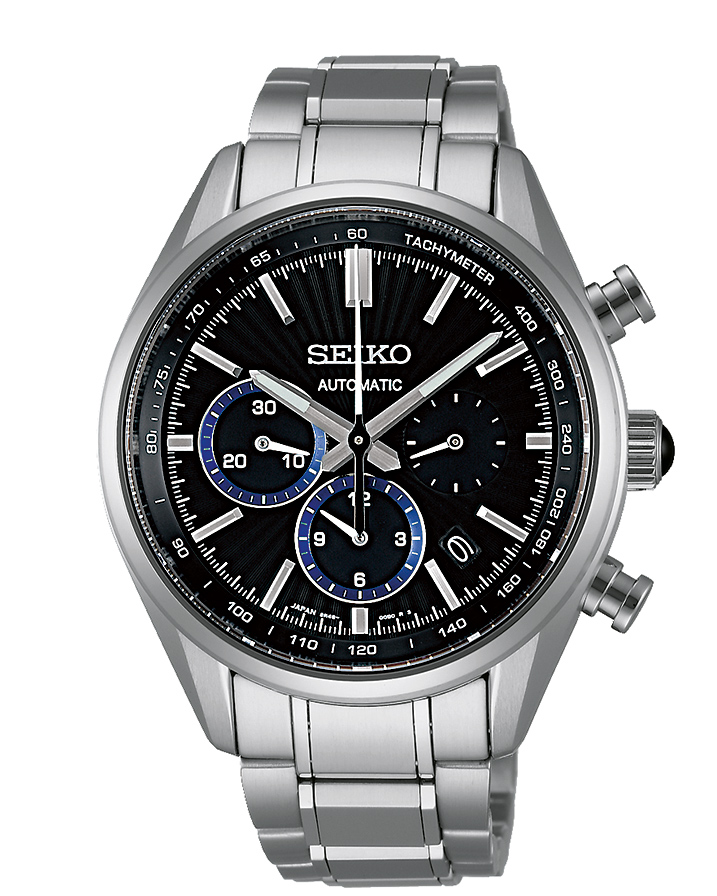
CALIBER 6139: FIRST AUTOMATIC CHRONOGRAPH ON THE MARKET
Seiko started working on the self-winding Calibers 6139 and 6138 in 1967, even though by then much of the watch industry was focusing its attention on quartz technology.It’s well known that Swiss companies were working feverishly in the 1960s to develop a self-winding chronograph, but no one knows whether their Japanese competitors knew about these efforts. It took the company just two years to develop Caliber 6139. Remarkably small, it had a diameter of 27.4 mm and a height of 6.5 mm. Its mainspring was a ball-borne, center-mounted rotor, which worked in conjunction with Seiko’s innovative Magic Lever (still in use today), a click-winding system that can use the rotor’s kinetic energy regardless of which way the rotor turns. After being fully wound, the watch would run for 36 hours with the chronograph switched on.
The new movement, housed in a watch called the 5 Speed-Timer, appeared in stores in mid-May of 1969. Seiko therefore won the race to bring the first automatic chronograph to market. (Two competitors, Zenith and a consortium of other Swiss companies − Breitling, Heuer, Hamilton-Buren and Dubois Dépraz – brought automatic chronographs to market later in the year.) Caliber 6138, which was 7.9-mm thick, debuted in 1970. It differed from Caliber 6139 because it had a running seconds hand and a counter for 12 elapsed hours. Seiko also incorporated Caliber 6138 into a so-called “bullhead” model, similar to Omega’s manual-wind bullhead, with pushers at the top of the case instead of on the side.
To improve the rate performance, the caliber’s developers gave the balance a frequency of 3 Hz (21,600 vph), instead of the then-standard 2.5 Hz (18,000 vph). Other technical specifications included a column wheel to control the chronograph’s functions, a counter for 30 elapsed minutes at the “6,” and vertical coupling. This last feature was quite innovative at the time: its debut here significantly predated its premiere in Swiss watches. In addition to a date display, Seiko also equipped this model with a bilingual (Japanese and English) indicator for the day of the week.
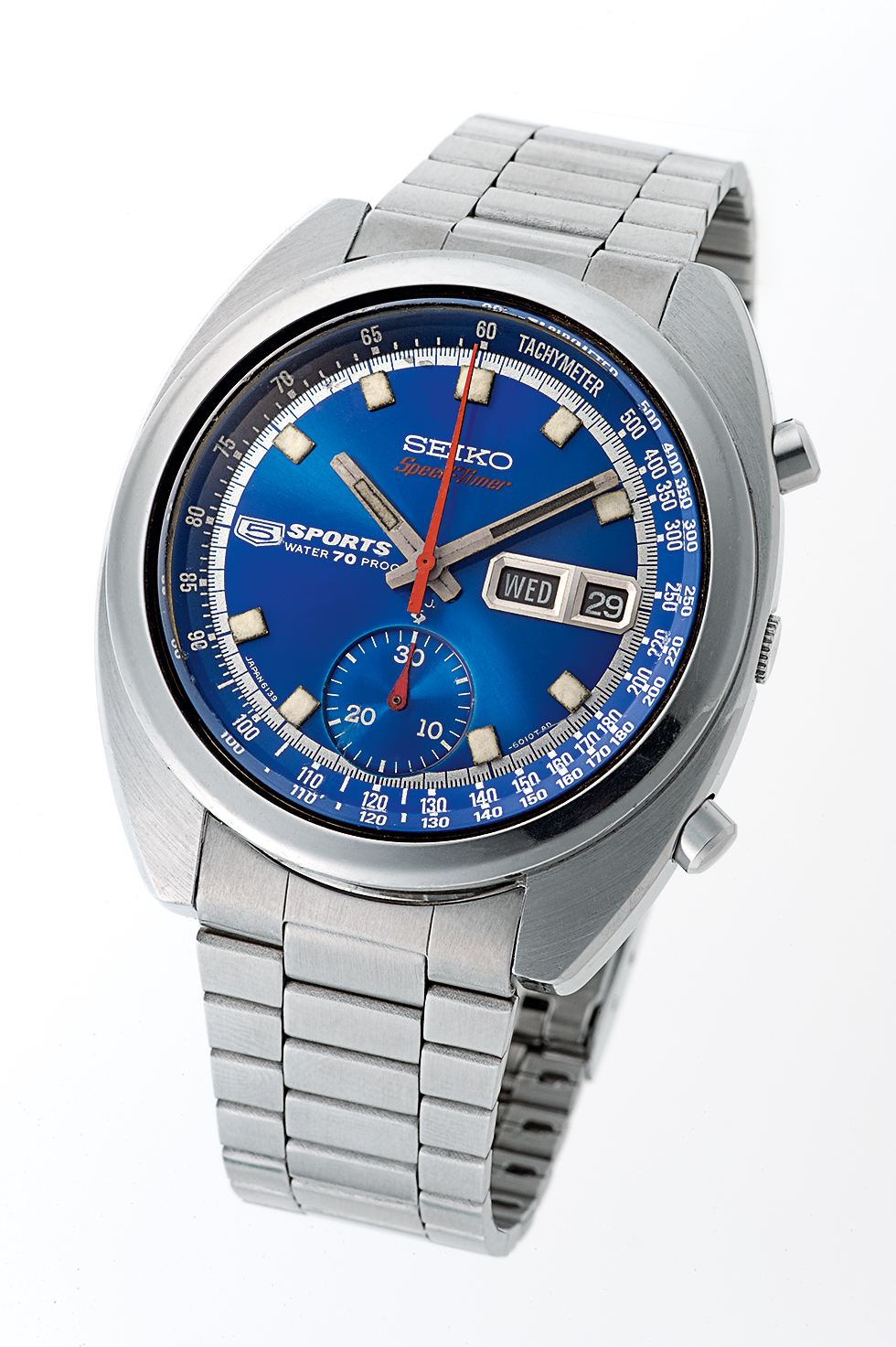
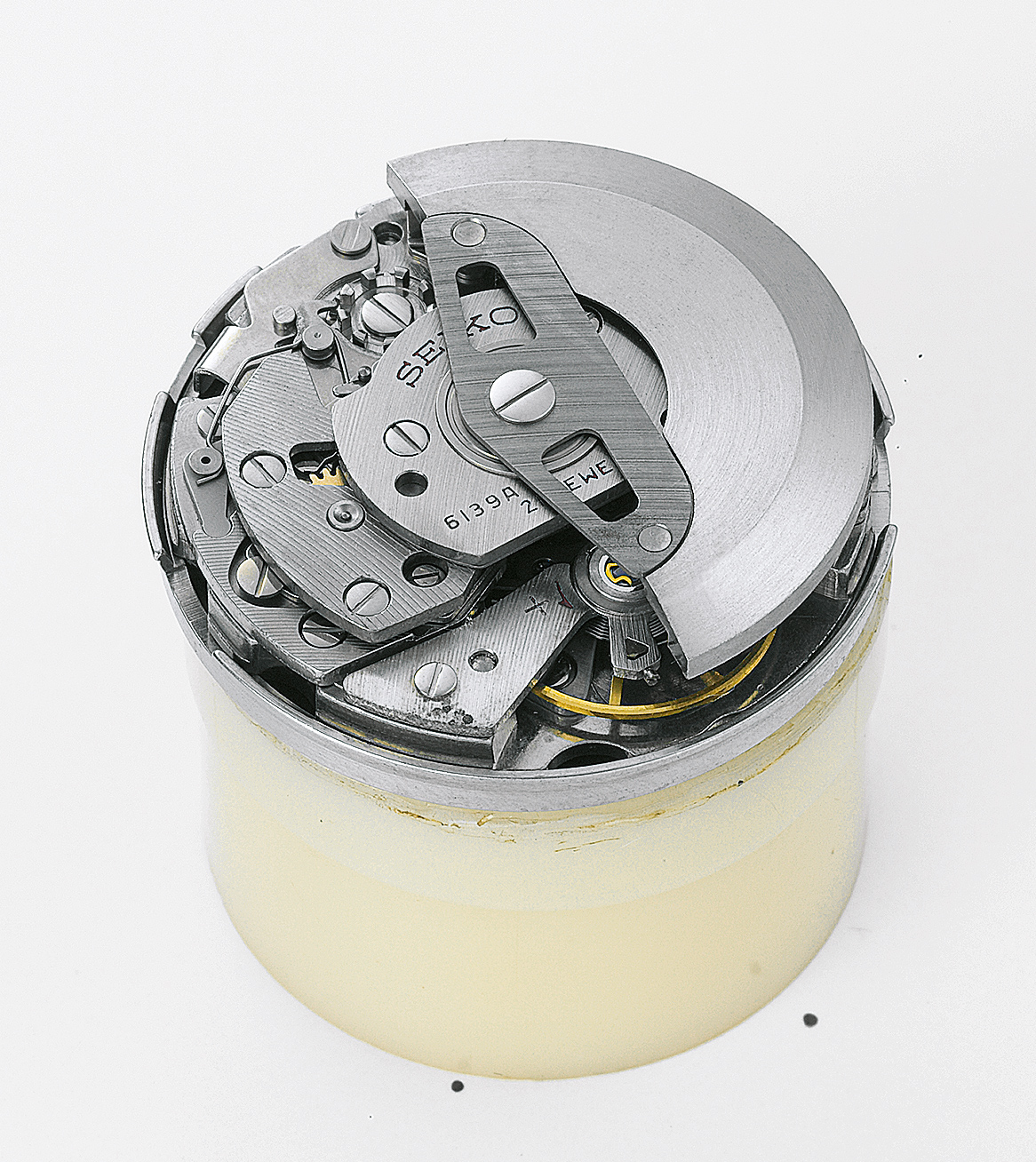
When U.S. astronaut William Reid Pogue flew aboard the Skylab-4 mission in 1973 to 1974, he wore a watch (nowadays nicknamed the “Pogue Seiko”) powered by Caliber 6139.Incidentally, Seiko can also claim the honor of having sent the first self-winding chronograph into outer space.
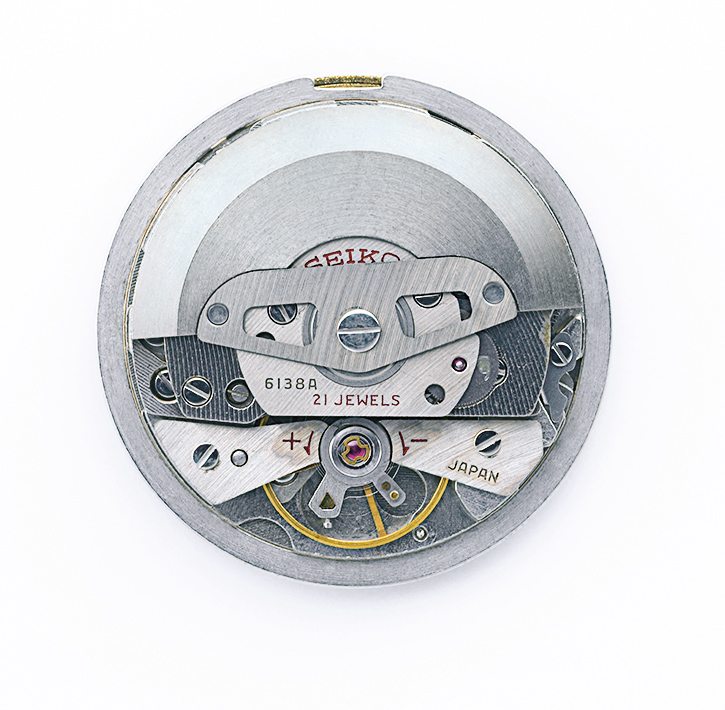
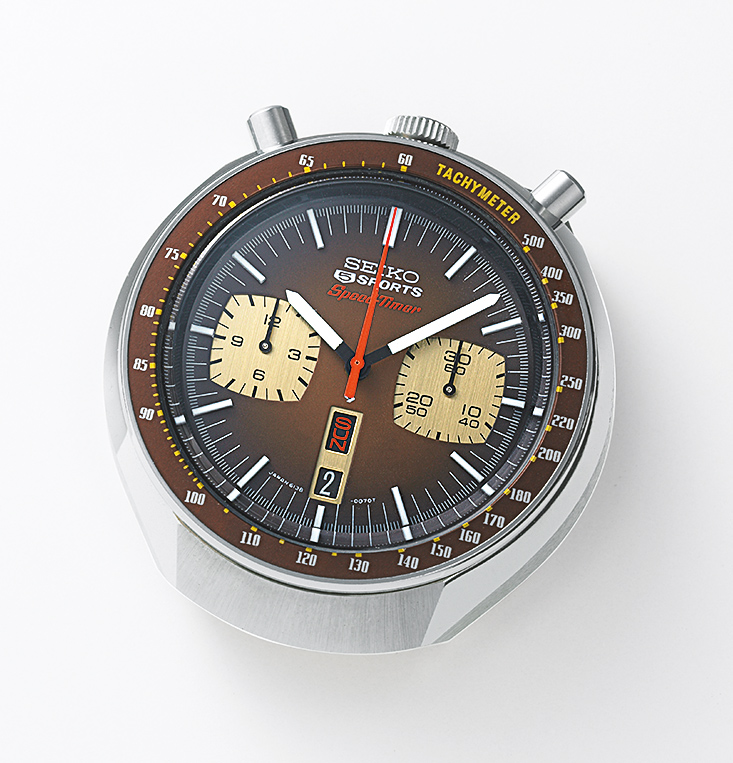
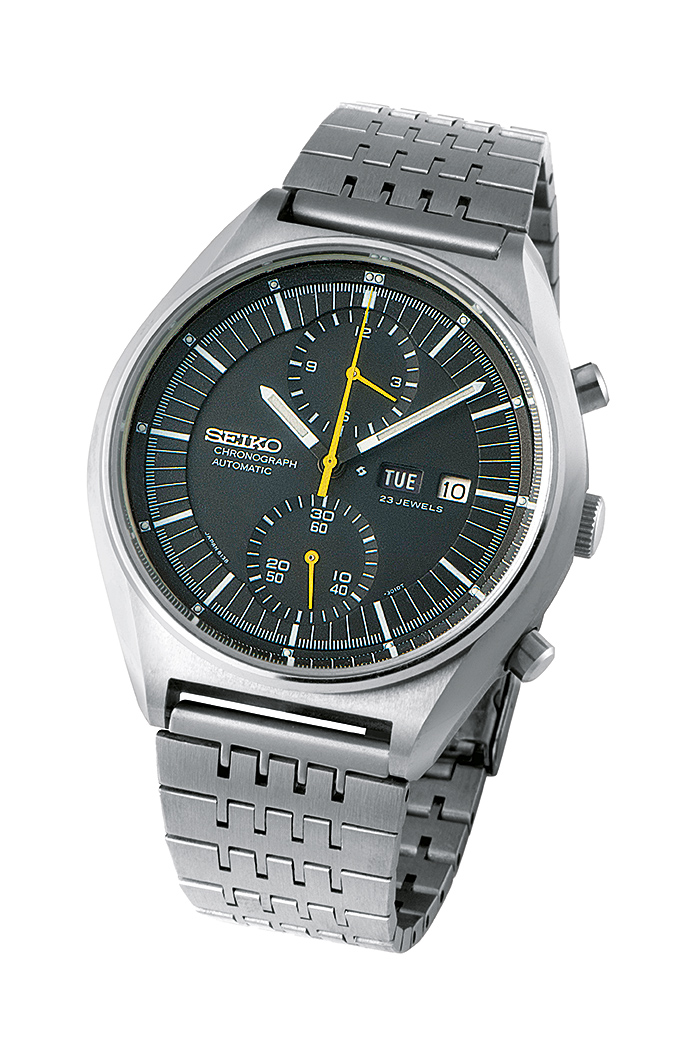
CALIBER 7017: SLIM AUTOMATIC CHRONOGRAPH
With a thickness of just 5.9 mm, the 27.4-mm-diameter Caliber 7017 set a world record. In 1970, Daini Seikosha, which that year became Seiko Instruments Inc. (SII), introduced the so-called “70s Series” of mechanical chronograph movements.The Decreasing the overall number of components made the movement more compact and its servicing easier. Magic Lever winding system, the column wheel and the vertical coupling all recalled Caliber 6139, but the 7017 was a genuinely new movement with many special features, including a “creeping” hand to tally the elapsed minutes.But to achieve the movement’s record-breaking slimness, the designers had to leave out an elapsed-minutes counter. They retained digital displays for the date and day.
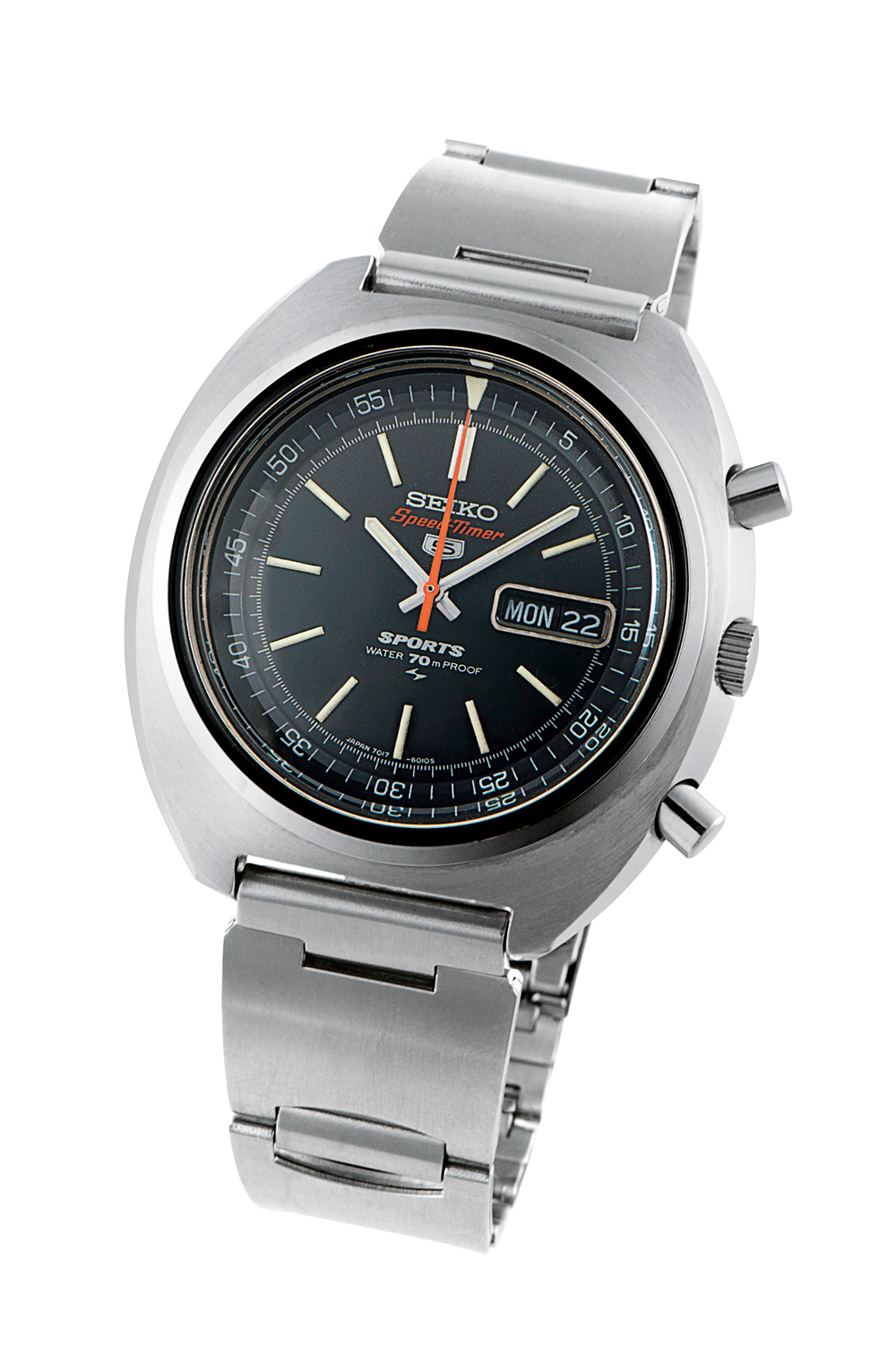
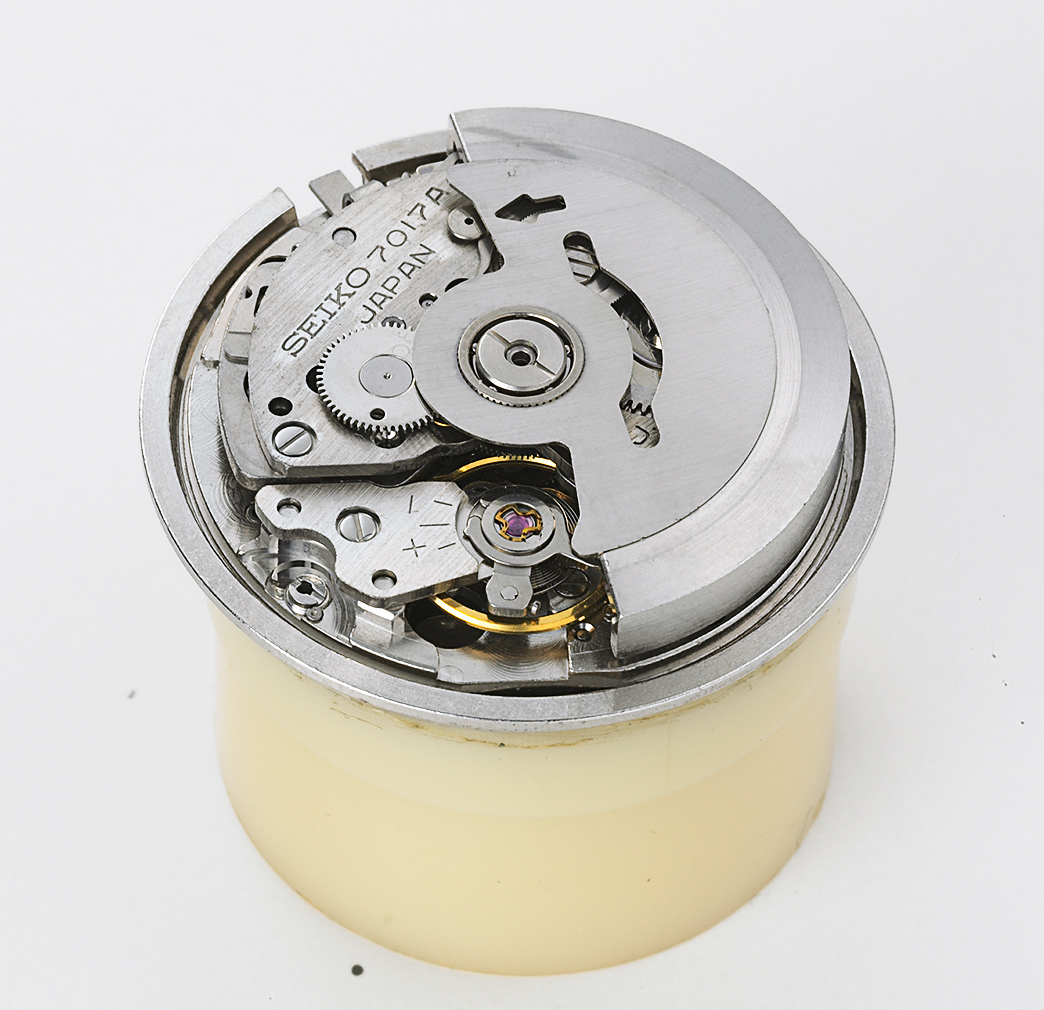
Seiko discontinued production of mechanical chronograph calibers in 1977. In the early 1980s, it stopped making mechanical watches altogether. The machines used for their production were assigned to the scrap heap, but veteran employees refused to follow orders and did not destroy them. Thanks to these employees, the renaissance of mechanical watches – which had begun in Europe several years before – could commence in Japan in the mid-1990s.
Caliber 7015 and Seiko’s top-of-the-line Caliber 7016 followed in 1972. The equally slim Caliber 7018 debuted in 1971: it had a counter for 30 elapsed minutes.The latter had two concentrically rotating hands in a subdial at 6 o’clock: one for the running seconds and the other to tally up to 30 elapsed minutes.
